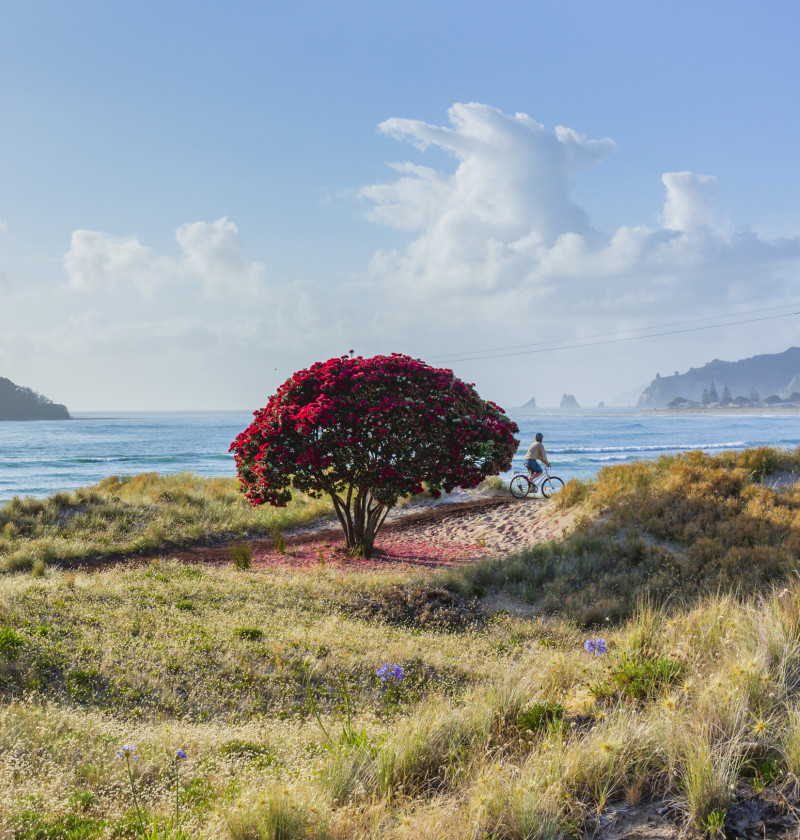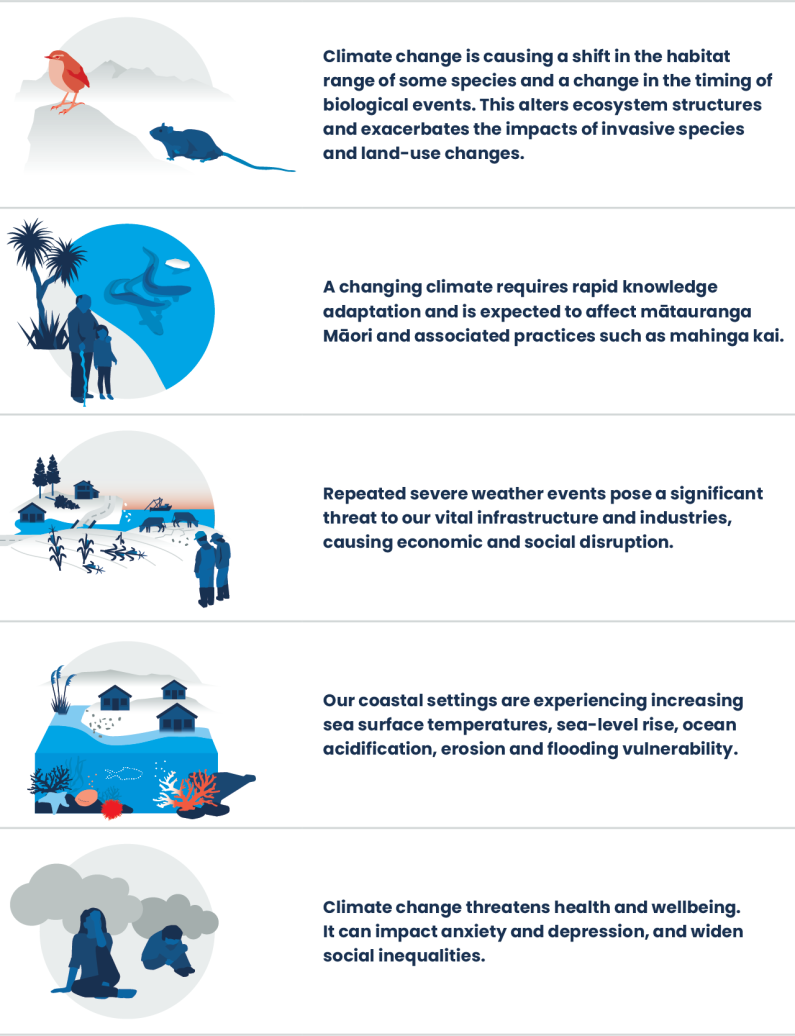Impacts on biodiversity, and our cultural, social and economic wellbeing



Ka ora te taiao, ka ora te tāngata
The interconnected nature of the environment means the impacts of our changing climate are cascading through ecosystems, compounding other pressures from human activities including past land use choices, habitat fragmentation and pollution. These compounding pressures are affecting our biodiversity and species ranges and disturbing ecosystem structures, as well as exacerbating the risk of other threats such as invasive species. Heat extremes have driven local extinctions of species, along with mass mortality on land and in the ocean. Biodiversity loss threatens the ability of our ecosystems to absorb carbon and limits their ability to provide protection and resilience against the impacts of climate change.
Climate change is also having widespread effects on humans and our communities and society. In some situations, climate change is increasing risks to our safety and security or exacerbating existing vulnerabilities. Climate-related risks are already affecting the financial system and broader Aotearoa New Zealand economy. Two-thirds of New Zealanders live in areas prone to flooding and rising sea levels. Food insecurity, loss of livelihoods and uncertainty around climate change have ongoing effects on mental health. Changing seasons affect mātauranga Māori (Māori knowledge) and many important Māori practices including the transfer of mātauranga Māori across generations. Māori practices, such as mahinga kai (traditional food gathering practices) and rongoā (healing), need to adapt to the changing availability of species and loss of taonga (treasured) species.

Impacts on biodiversity, and our cultural, social and economic wellbeing
November 2023
© Ministry for the Environment